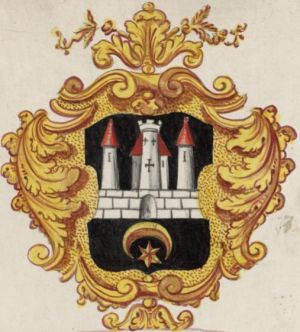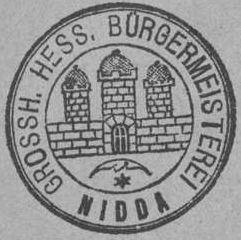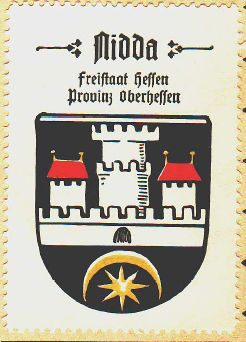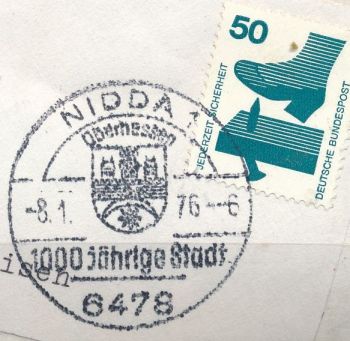Nidda: Difference between revisions
Knorrepoes (talk | contribs) m (Text replacement - " / Arms" to "/Arms") |
Knorrepoes (talk | contribs) m (Text replacement - "{{media}} Literature : Stadler, 1964-1971, 8 volumes." to "Literature : Stadler, 1964-1971, 8 volumes. {{media}}") |
||
| Line 27: | Line 27: | ||
|align="center"|[[File:{{PAGENAME}}p1.jpg|center|350 px|Arms of {{PAGENAME}}]] <br/>The arms on a special cancellation 1976 | |align="center"|[[File:{{PAGENAME}}p1.jpg|center|350 px|Arms of {{PAGENAME}}]] <br/>The arms on a special cancellation 1976 | ||
|} | |} | ||
[[Civic Heraldry Literature - Germany|Literature]] : Stadler, 1964-1971, 8 volumes. | |||
{{media}} | {{media}} | ||
[[Category:German Municipalities N]] | [[Category:German Municipalities N]] | ||
Revision as of 07:45, 8 September 2022
This page is part of the German heraldry portal Deutsche Wappensammlung |
Heraldry of the World |
|
German heraldry:
|
Selected collector's items from Germany:
|
NIDDA
State : Hessen
District (Kreis) : Wetteraukreis (until 1972 Büdingen)
Additions : 1970 Bad Salzhausen, Borsdorf, Fauerbach bei Nidda, Geiss-Nidda, Harb, Kohden, Michelnau, Ober lais, Ober Schmitten, Ober Widdersheim, Stornfels, Ulfa, Unter Lais, Unter Schmitten, Wallernhausen; 1971 Schwickartshausen; 1972 Eichelsdorf, Unter-Widdersheim
| German | Im schwarzen Schild über einem erniedrigten Halbbogen, darin ein achtstrahliger goldener Stern, eine durchgehende silberne Zinnenmauer mit rotem Tor, überragt von einem bezinnten silbernen Mittelturm zwischen zwei silberbedachten Seitentürmen, alle mit roten Fenstern
Origin/meaningNidda became a city in 1234 and the oldest seal probably dates from the same time. The seal shows a city wall with towers and a gate. From the 14th century onwards, the gate is replaced by the moon and crescent. The colours are known since 1718. The city walls represent the fact that Nidda was a city, the star is taken from the arms of the Lords of Ziegenhain, who owned the city, whereas the crescent may be a typical city or religious symbol.
Literature : Stadler, 1964-1971, 8 volumes. Contact and SupportPartners: Your logo here ?
© since 1995, Heraldry of the World, Ralf Hartemink |


















